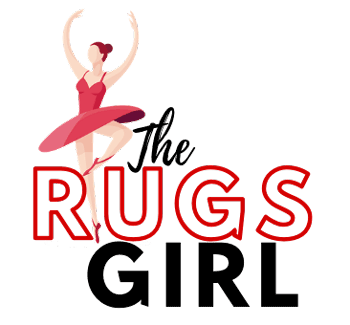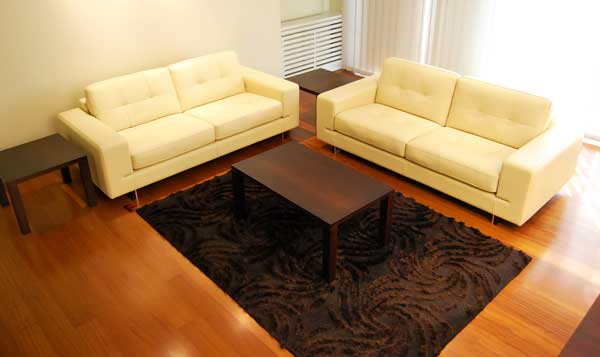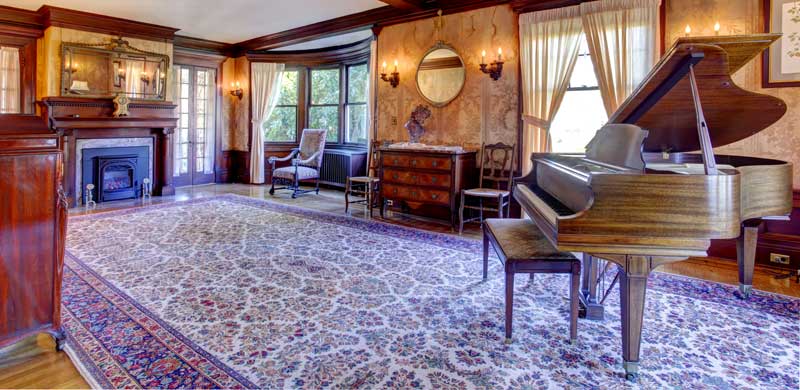If you are looking for a way to add warmth style to your home, you might want to know the Types of Oriental Rugs.
Oriental rugs are hand-knotted carpets that originate from countries in Asia, such as Iran, Turkey, India, China, and Afghanistan. They are known for their intricate patterns, rich colors and high quality. However, not all oriental rugs are the same.
There are many types of oriental rugs, each with its own history, characteristics, and value.
Contents
- 1 What is an oriental rug?
- 2 Identifying types of oriental rugs
- 3 Different types of oriental rugs
- 4 FAQs about types of oriental rugs
- 4.1 What is considered an oriental rug?
- 4.2 How can I tell what kind of oriental rug I have?
- 4.3 What is the difference between Persian and Oriental rugs?
- 4.4 What are the thickest Oriental rugs?
- 4.5 How do I know if my rug is Persian or Turkish?
- 4.6 What do they call Oriental rugs now?
- 4.7 How can you tell if an oriental rug is real?
- 5 Final Thought
What is an oriental rug?
An oriental rug is a term that refers to any hand-knotted carpet that is made in an “oriental” country, such as Iran, Turkey, India, China, and Afghanistan. The term is not very precise, as it covers a wide range of styles, designs, and qualities. However, some common features of oriental rugs are:
- They are made of natural fibers, such as wool, silk or cotton.
- They are dyed with natural or synthetic dyes, often in vibrant colors.
- They have a pile (the surface of the rug) that is formed by knots tied around a foundation (the base of the rug), usually made of cotton or wool.
- They have a fringe (the ends of the rug) that is formed by the loose ends of the foundation threads.
- They have a border (the edge of the rug) that is usually decorated with geometric or floral motifs.
- They have a field (the central part of the rug) that can feature various patterns, such as medallions, floral motifs, geometric shapes, animals or scenes.
Identifying types of oriental rugs
There are hundreds of types of oriental rugs, each with its own name, origin, and features. Some of the factors that can help you identify the type of oriental rug are:
- The country or region where it was made
- The tribe or ethnic group that made it
- The city or village where it was made
- The style or design of the rug
- The materials and colors used in the rug
- The knotting technique and density of the rug
- The size and shape of the rug
To help you get started, here are some of the most common and popular types of oriental rugs and how to recognize them.
Best Rug Under Dining Table
EARTHALL Cotton Buffalo Checkered Area Rug
It is made from cotton: This is a very durable and easy to clean rug material for high traffic places. The dining table is a high traffic area which makes this rug an ideal choice.
Hand-woven: Handmade rugs are often very durable and unique. That means this rug will serve you for many years. Discover which country makes the best rugs, especially those which are hand-woven on that post.
Farmhouse checkered design: This patterned design makes this rug easy to blend with many home decor patterns. It also makes this rug versatile such that apart from the dining area, it can also be used in outdoor spaces, living rooms, kitchen, laundry rooms, entryways, and bedrooms among other spaces in your home.
The fabric: It comes in several color shades-blue, white, gray, red, blue, and black among others. The fabric is also non-fade, durable and easily washable.
Grace period: After you buy the rug, you shall have a 30-day money-back guarantee period where you are allowed to return the rug if you don’t like it.
Different types of oriental rugs
As we have seen above, there are many types of oriental rugs, each with its own characteristics and value. Here are some of the most popular and sought-after types of oriental rugs and their features:
Bokhara rugs
Bokhara rugs are a type of oriental rug that originated in the Bukhara region of Uzbekistan. They are characterized by their symmetrical patterns of repeated octagonal or diamond-shaped motifs, called guls, in red, blue, green or ivory colors. Bokhara’s rugs are usually made of wool and have a soft and dense pile. They are considered to be among the finest and most durable oriental rugs.
Persian rugs
Persian rugs are a type of oriental rug that originated in Iran (formerly Persia). They are characterized by their diverse and intricate patterns, often featuring floral motifs, medallions, animals, or scenes. Persian rugs are made of wool or silk and have a fine and smooth pile. They are considered to be among the most beautiful and valuable oriental rugs.
Ikat rugs
Ikat rugs are a type of oriental rug that originated in Central Asia, especially Uzbekistan and Afghanistan. They are characterized by their abstract and colorful designs, created by a tie-dye technique that involves dyeing the yarns before weaving them. Ikat rugs are made of wool or cotton and have a flat-weave or low-pile texture. They are considered to be among the most modern and trendy oriental rugs.
Chobi Ziegler rugs
Chobi Ziegler rugs are a type of oriental rug that originated in Pakistan, inspired by the Persian Ziegler rugs that were produced in the late 19th century for the European market.
Kilim rugs
Kilim rugs are a type of oriental rug that originated in various regions of Asia, such as Turkey, Iran, Afghanistan, and Morocco. They are characterized by their geometric and tribal designs, created by a flat-weave technique that involves interlocking the warp and weft threads without forming a pile. Kilim rugs are usually made of wool or cotton and have a thin and light texture. They are considered to be among the most affordable and durable oriental rugs.
FAQs about types of oriental rugs
What is considered an oriental rug?
An oriental rug is any hand-knotted carpet that is made in an “oriental” country, such as Iran, Turkey, India, China, and Afghanistan. The term is not very precise, as it covers a wide range of styles, designs, and qualities.
How can I tell what kind of oriental rug I have?
To tell what kind of oriental rug you have, you need to look at various factors. Such as the country or region where it was made, the tribe or ethnic group that made it, the city or village where it was made. The style or design of the rug, the materials, and colors used in the rug, the knotting technique and density of the rug, and the size and shape of the rug.
What is the difference between Persian and Oriental rugs?
Persian rugs are a type of oriental rug that originated in Iran (formerly Persia). Oriental rugs are a broader term that includes Persian rugs as well as other types of hand-knotted carpets that originate from other countries in Asia.
What are the thickest Oriental rugs?
The thickness of an oriental rug depends on the knotting technique and density of the rug. Generally speaking, the thicker the pile (the surface of the rug), the thicker the rug.
How do I know if my rug is Persian or Turkish?
To know if your rug is Persian or Turkish, you need to look at various factors, such as the design, the colors, the materials, and the knotting technique of the rug. Generally speaking, Persian rugs tend to have more curvilinear and floral patterns, while Turkish rugs tend to have more geometric and tribal patterns. Persian rugs tend to have more varied and subtle colors, while Turkish rugs tend to have more bold and contrasting colors. It tends to use more wool and silk, while Turkish rugs tend to use more cotton and wool.
What do they call Oriental rugs now?
Oriental rugs are still called Oriental rugs, as it is a widely used and accepted term in the rug industry and among collectors and enthusiasts. However, some people may prefer to use more specific terms, such as Persian rugs, Turkish rugs, Afghan rugs, etc., to refer to the origin or type of the rug.
How can you tell if an oriental rug is real?
To tell if an oriental rug is real, you need to examine various aspects of the rug, such as the back, the fringe, the pile, the knots, the colors, and the design. Here are some tips to help you identify a real oriental rug:
- The back of a real oriental rug should show the same pattern as the front, but in reverse colors. It should also be smooth and flat, without any bumps or glue.
- The fringe of a real oriental rug should be an extension of the foundation threads of the rug, not sewn or glued on separately. It should also be even and symmetrical on both ends of the rug.
- The pile of a real oriental rug should be made of natural fibers, such as wool, silk, or cotton. It is also soft and pliable, not stiff or synthetic.
- The colors of a real oriental rug should be natural or synthetic dyes that are resistant to fading and bleeding. The colors should also be harmonious and balanced, not clashing or dull.
- The design of a real oriental rug should be intricate and detailed, with clear and crisp motifs. The design should also be symmetrical and proportional, not distorted or irregular.
Final Thought
Oriental rugs are more than just floor coverings. They are pieces of art that reflect the culture, history, and craftsmanship of their makers. They are also valuable investments that can last for generations if properly cared for. You need to know how to identify the different types of oriental rugs and choose the one that suits your taste, budget and space.




































